The weather we’ve had this past month has been scorching. Since I got back from Denmark, I’ve been hiding in the house and using work as an excuse to avoid the sun. My lovely friend Daisy is similarly melanin-deficient, but we can never resist the draw of foraging.
The little woodland near us has exploded in growth. The brambles are heavy with fruit and we were eager to harvest a few before they were gobbled by other foragers.

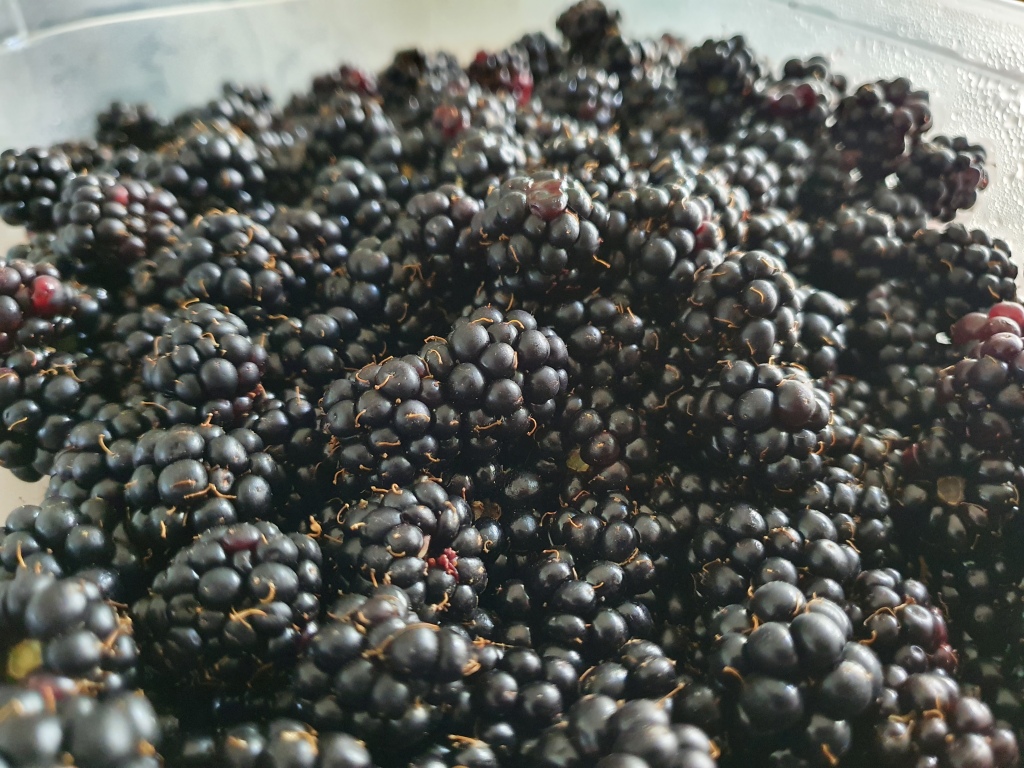
Blackberries are found in the archaeological record at York (Hall & Kenward, 2004) during the Viking Age. As someone interested in historical food from the UK, I’m always excited to use ingredients that can add some sweetness and tartness to dishes- depending on the season, these can be few and far between in the VA. I picked just shy of a kilo of blackberries and decided to use them to make a full period-plausible meal to enjoy with Eric and Daisy. I’ve included two easy recipes using the blackberries below- I don’t think you all need a recipe to roast a chicken!
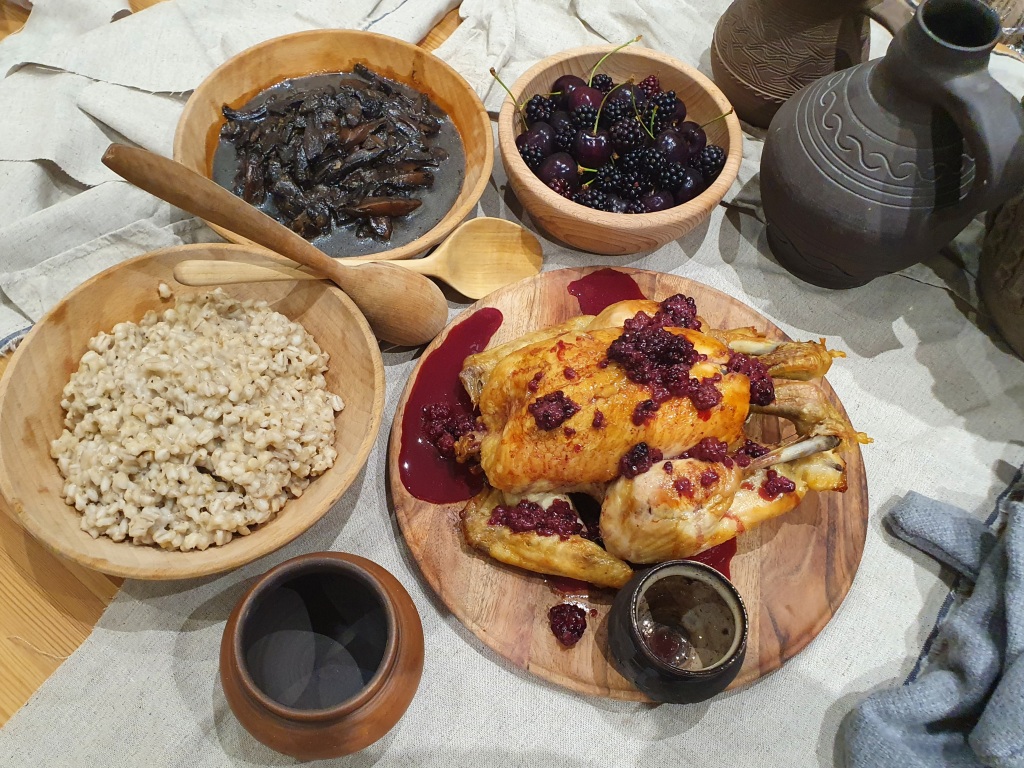
The Menu: Roast chicken with blackberry sauce, drunken mushrooms, fried and boiled eggs, buttery pearl barley and wheat bread. Stewed blackberries and cherries with hazelnut cookies and cream. (Not all pictured, because we’re greedy.)
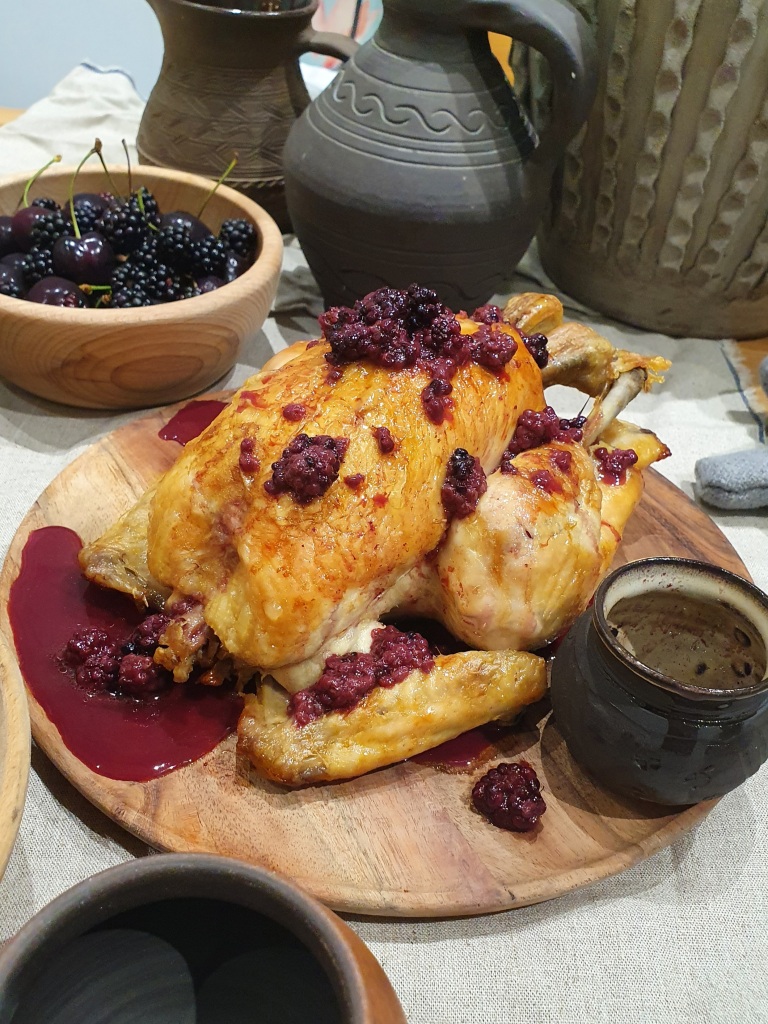
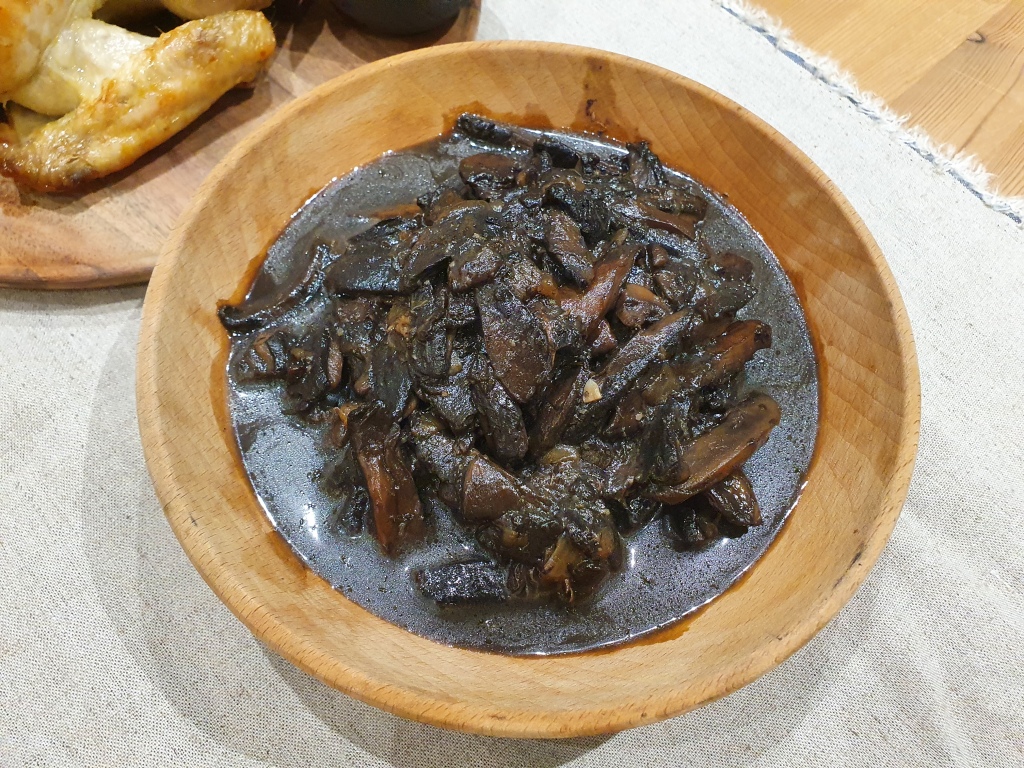


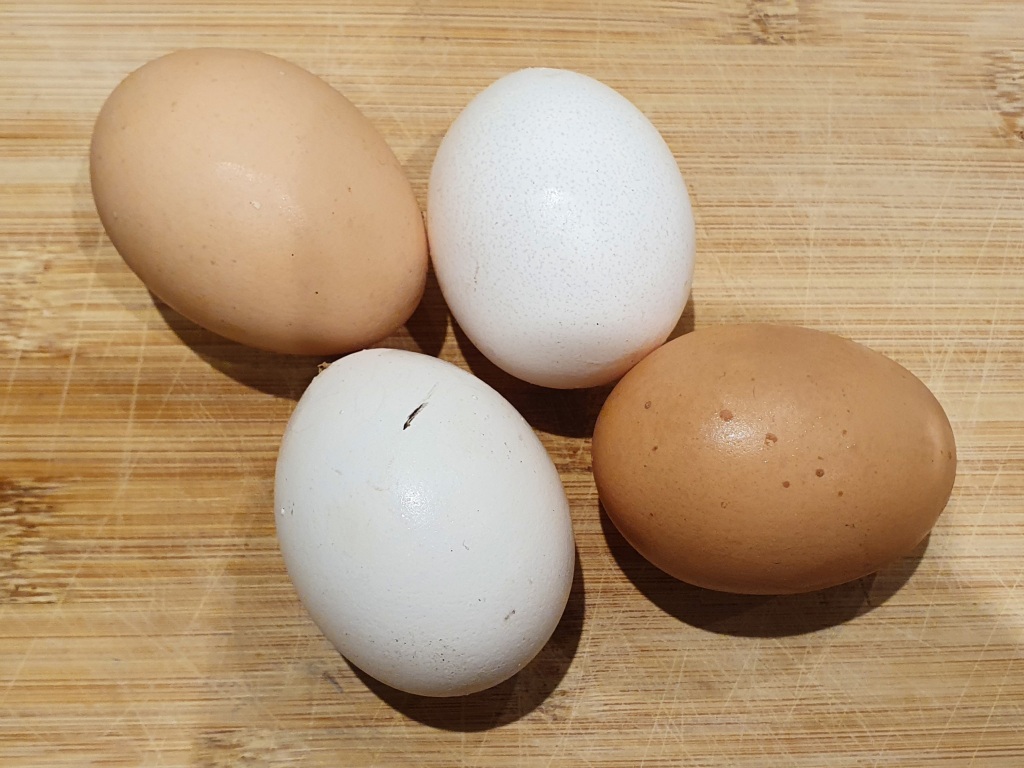
Blackberry Gravy
This sauce can be paired with any meat- I chose to do chicken this time because I’d not roasted one in a while. It will however go very nicely with gamey meats like venison and pigeon or even with more traditional roasts like beef or pork. I imagine the addition of apple would go fabulously with a fatty pork joint.
Using meat drippings for this gravy will cause the fat to rise to the top and be less pretty, but it tastes much better. Just make sure not to add salt if you use drippings- that’s a lot of sodium!
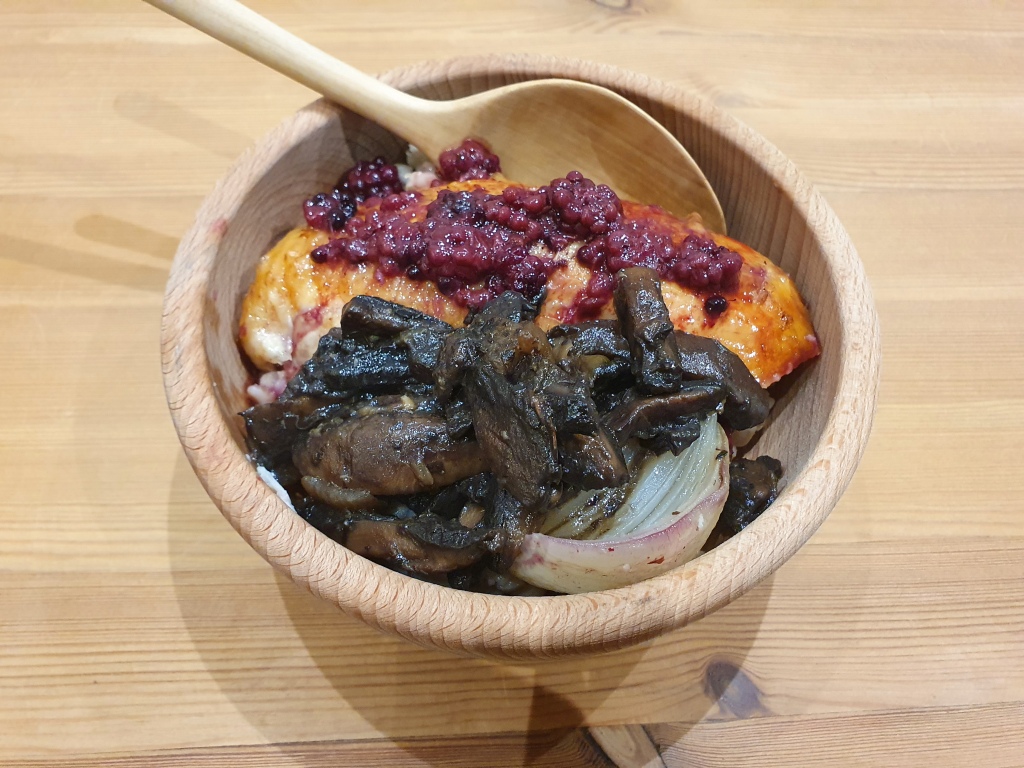
Ingredients:
- 2 tbsp butter or vegetable oil
- 1 small brown onion or handful of shallots, chopped finely
- 2 cloves garlic, peeled
- 200g fresh blackberries
- 1 tbsp white wine vinegar
- Meat drippings from your roast or 150ml stock of your choice
- 2 tbsp honey (adjust to taste)
Method:
1. Melt your butter over a low-medium heat and add your chopped onions and garlic. Cook gently until onions are just softening.
2. Wash your blackberries well and pat dry with kitchen paper. Add your blackberries, vinegar and meat drippings/stock to your onions and combine over a medium heat. Allow to simmer gently for around 5 minutes, stirring frequently to prevent burning.
3. Once your berries have softened and released their juice, taste your gravy and if you like, add your honey. Make sure honey is melted and combined, then serve hot over your meat.
Stewed blackberries and cherries
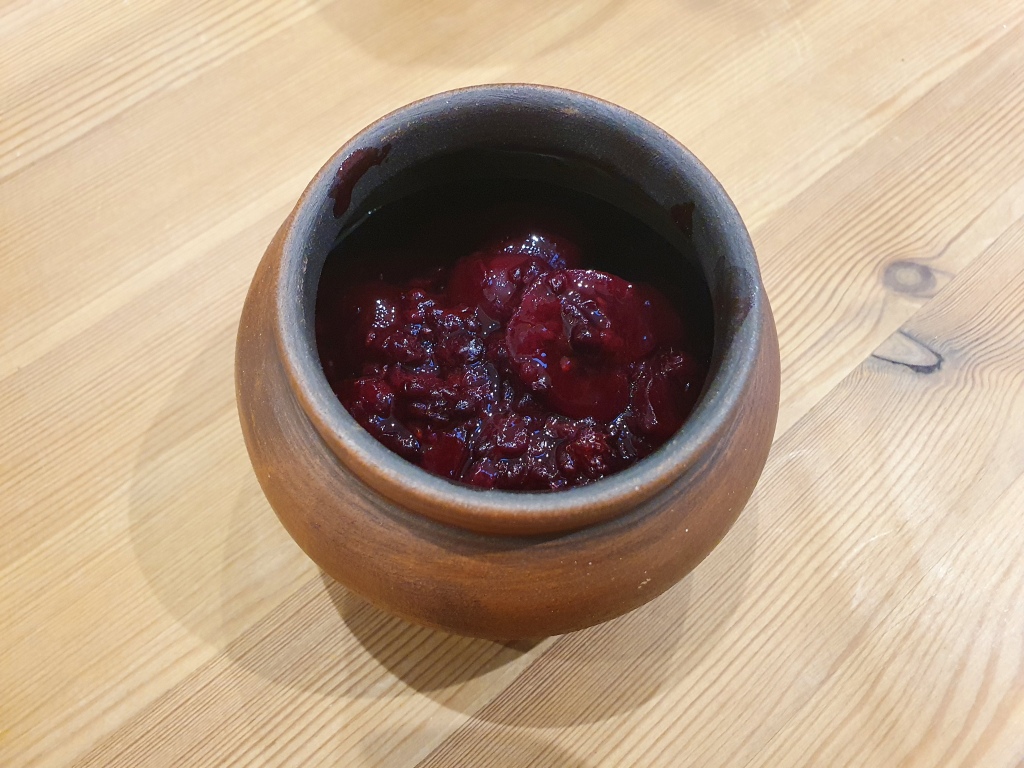
This is pretty bog-standard. Recipes for fruit pottages exist from later in the Medieval period and fruit soups of many kinds exist in several European cuisines to this day. Therefore, I reason that Viking Age folks would also have stewed their fruit if they had a glut from the hedge or the garden. Cherries have not been found in the archaeological record at York, but evidence can be found in both Hedeby and Dublin (Mitchell, 1987) and wild cherry is native to the UK.
This recipe is very tasty with porridge and yoghurt, but I served it on this occasion warm from the pot with cream and hazelnut cookies. My favourite recipe is written by my friend Craig, author of Eat Like A Viking and can be found here: give them a go!
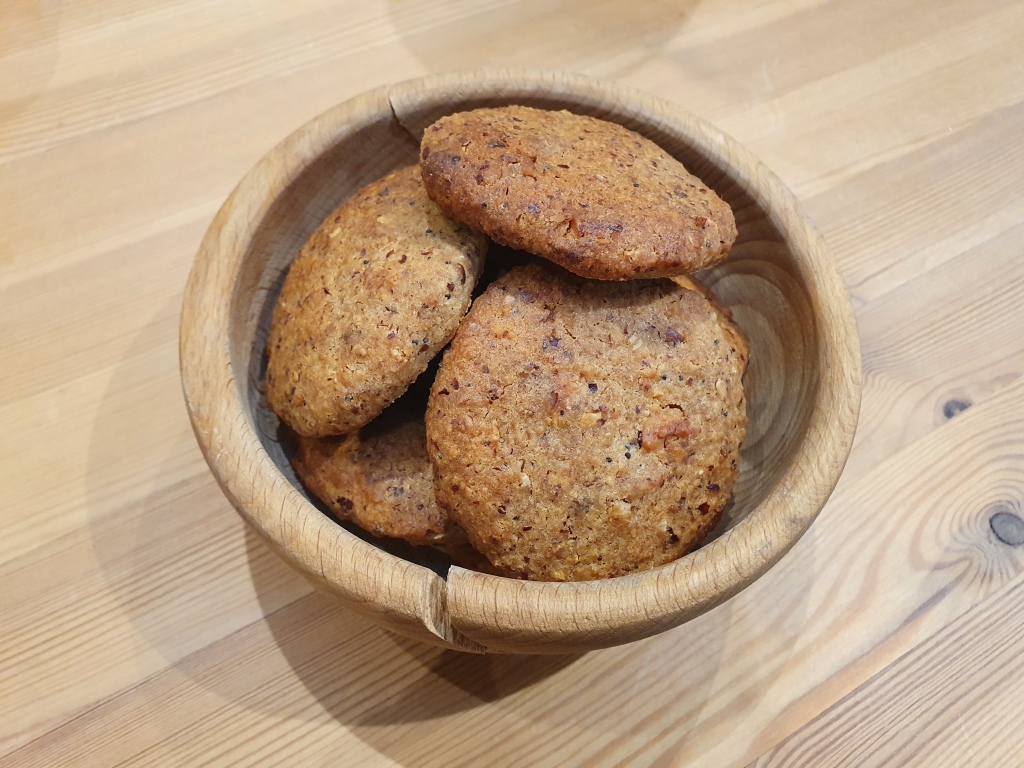
Ingredients:
- 500g cherries, stones removed and halved
- 500g blackberries
- 100ml water or good sweet mead
- 2 tbsp honey
- Small pinch of salt
Method:
1. Place water/mead in a saucepan and heat over a medium-high heat. Wash your fruit well and add to pan. Stir gently and frequently until the fruit mix comes to a simmer- no need to let it boil. Turn down the heat to medium and keep it at a simmer for about 8 minutes, until the fruit is soft and the liquid has reduced a little.
2. Carefully taste your fruit mix (it will be very hot!) and add honey to taste. Some people prefer a more tart flavour to their stewed fruits, whereas I love the taste of honey. Less honey is probably more historically accurate!
3. Serve immediately with cream and cookies. If you have any left over, this would make a great crumble or pie filling- but bear in mind that without sugar, it will be more runny than modern recipes.
If you were interested how this all looked as modern dish, here we are:

All the items included in our meal are either represented in the archaeological record in Anglo-Scandinavian York or indeed would have been available to people living there. It’s unlikely that people would have eaten as richly as this every day, but for a little feast among friends after foraging for berries in the sun, I think it does nicely.
References
Hall, R. A. & Kenward, H. (2004). Setting People in their Environment: Plant and Animal Remains from Anglo-Scandinavian York. In: Hall, R. A. (Ed). Aspects of Anglo-Scandinavian York. York: York Archaeological Trust. pp.372-426.
Mitchell, G. F. (1987). Archaeology & Environment in Early Dublin. Medieval Dublin Excavations 1962-81, Series C, Volume 1. Dublin: Royal Irish Academy and the National Museum of Ireland.